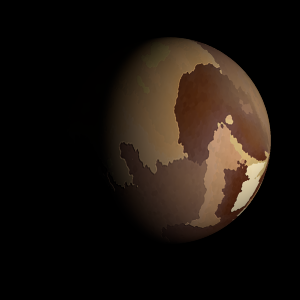|
|
Space Astro
|
Info for exoplanet "Masi-ophe Gala"
| Scientific (actual) data |
|---|
| Name | Kepler-221 d |
| Planet status | Confirmed |
| Radius | 0.244 |
| Orbital period | 10.0416 |
| Semi major axis | 0.087 |
| Discovered | 2014 |
| Updated | 2021-02-05 |
| Tconj | 2454970 |
| Impact parameter | 0.36 |
| Publication | Announced on a website |
| Detection type | Primary Transit |
| Alternate names | 2MASS J19463714+4650069 d, K00720.02, KIC 9963524 d, KOI-720 d, KOI-720.02, WISE J194637.14+465006.8 d |
| Star name | Kepler-221 |
| Right ascension | 296.66° |
| Declination | 46.84° |
| Mag j | 12.413 |
| Mag h | 11.995 |
| Mag k | 11.9 |
| Star distance | 389.55 |
| Star metallicity | -0.413 |
| Star mass | 0.72 |
| Star radius | 0.82 |
| Star temperature | 5243 |
| Star alternate names | 2MASS J19463714+4650069, KIC 9963524, KOI-720, WISE J194637.14+465006.8 |
| Wikipedia article | Kepler-221 d |
Back
| |
| Fictional info (?) |
|---|
| Suggested name | Masi-ophe Gala |
| Planet type | Warm planet |
| It may have had methane oceans in the past, but these would have vaporized as the temperature rose due to a runaway greenhouse effect.
The outer atmosphere is visibly segregated into several bands at different latitudes, resulting in turbulence and storms along their interacting boundaries.
Its north and south poles, therefore, lie where most other planets have their equators. |
| Atmosphere | Sulfur dioxide | 72% |
| Molecular hydrogen | 14% |
| Methane | 7.5% |
| Krypton | 5% |
| Carbonyl sulfide | 1% |
| Ammonium hydrosulfide (NH4SH) | 0.091% |
| Formaldehyde | 0% |
| Atmospheric pressure | 27 bar |
 |
| No known satellites |
| Google search for Masi-ophe gala |
|
Website by Joachim Michaelis
|
|
|
|